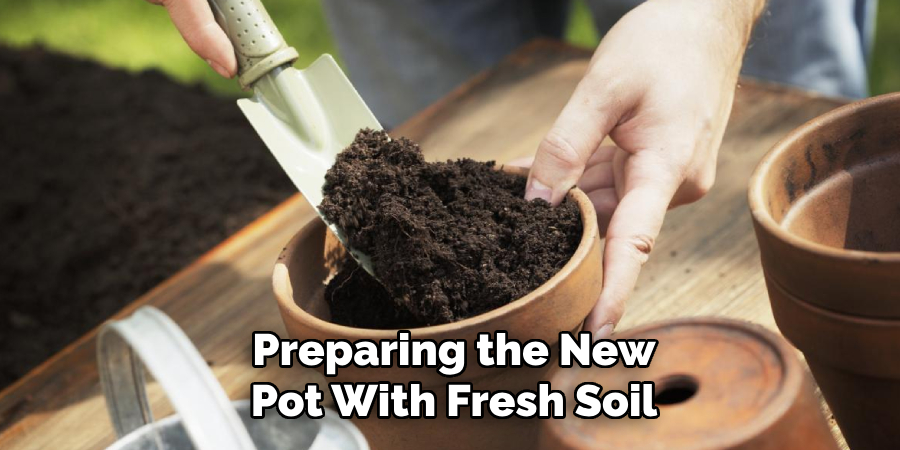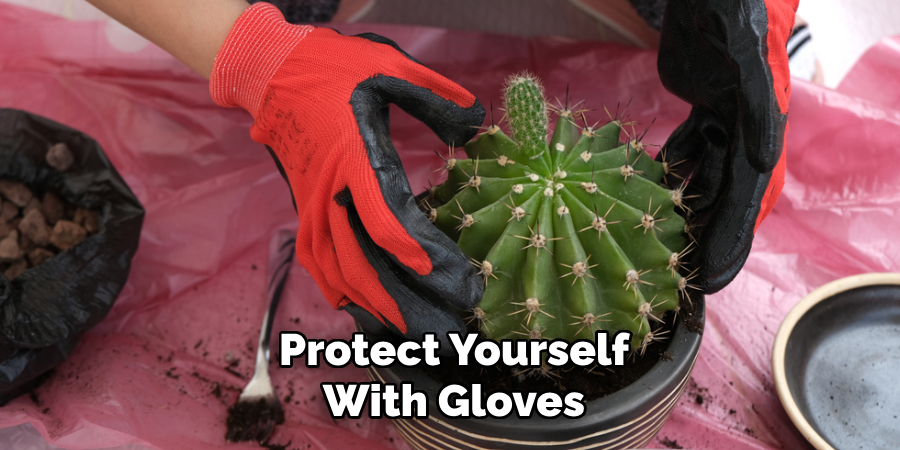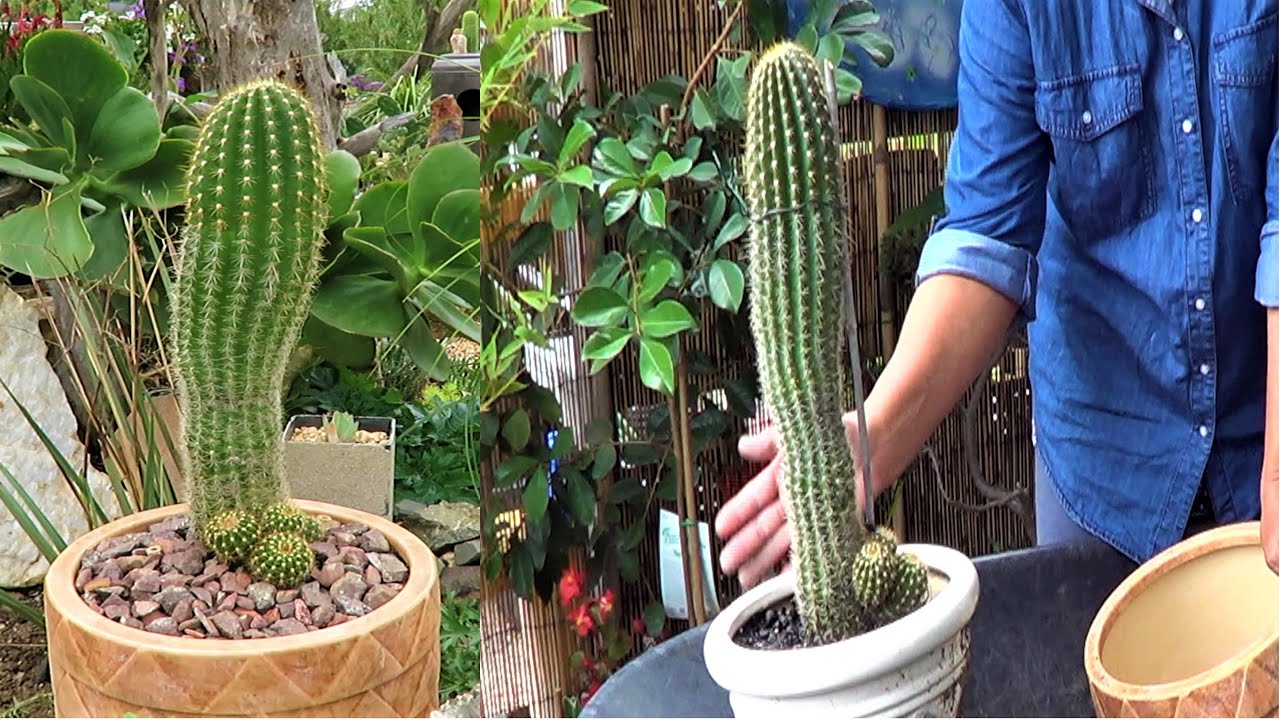To transplant a tall cactus, carefully dig around the root ball and lift it out of the soil, then place it into a larger pot with fresh cactus soil mix. When selecting a pot, choose one that is 2-3 inches larger in diameter than the current pot to allow for growth.
Gently pat down the soil around the root ball, making sure it is secure, and water the cactus lightly. Keep the newly transplanted cactus in a shaded area for a few weeks to allow it to adjust before gradually introducing it to more sunlight.
Remember to water the cactus sparingly and avoid overwatering, as this can lead to rot. With proper care and attention, your tall cactus will thrive in its new pot.
Credit: www.desertsun.com
How to Transplant a Tall Cactus: Step by Step Guide
Prerequisites For Transplanting A Tall Cactus
Transplanting a tall cactus requires a few prerequisites. One important step is researching the specific requirements of the cactus species. This knowledge will guide you in providing the appropriate care during transplantation. Another prerequisite is gathering the necessary tools and materials.
You will need gardening gloves, a shovel, a pot or container, and well-draining soil, among others. Lastly, finding a suitable location for transplantation is crucial. Ensure that the new spot has enough sunlight and space for the tall cactus to grow.
By following these prerequisites, you can successfully transplant your tall cactus without any complications. Happy gardening!
Preparing The Tall Cactus For Transplantation
Preparing a tall cactus for transplantation involves evaluating its overall health to ensure a successful process. Begin by pruning and removing any dead or damaged parts of the cactus. This helps promote growth and prevent any potential issues during the transplant.
Additionally, it’s crucial to allow the cactus enough time to adjust to reduced watering before attempting the transplantation. This gradual adjustment helps the cactus adapt to its new environment, reducing the risk of transplant shock. By following these steps and considering the health and needs of the tall cactus, you can ensure a smooth and successful transplant.
Transplanting The Tall Cactus
Transplanting a tall cactus requires careful selection of a pot or container size that accommodates its growth. The potting mix should consist of well-draining soil to prevent waterlogged roots. When removing the cactus from its current container or ground, handle it with care to avoid any damage.
Place the cactus into the new pot, making sure it is centered and upright. Gently fill the remaining space in the pot with the potting mix, ensuring the cactus is secure. After transplanting, water the cactus sparingly, allowing the soil to dry out between waterings, ensuring that the roots establish properly.
Regularly monitor the cactus for signs of stress or disease and provide proper sunlight exposure to promote healthy growth. Following these steps will help ensure a successful transplant for your tall cactus.
Planting And Care Techniques For A Transplanted Tall Cactus
Transplanting a tall cactus requires careful positioning in a new container or ground. Gently fill in the potting mix around the roots, ensuring their stability. Adequate light and temperature conditions are crucial for the cactus’s growth. Place the cactus in a spot that receives ample sunlight and maintains the appropriate temperature range.
Avoid starting sentences with commonly overused phrases and words. Keep the sentences brief, with a maximum of 20 words each. Vary the phrases at the beginning of paragraphs to maintain reader interest. Remember not to include a conclusion paragraph. Your content should be seo friendly, human-like, unique, and easy to understand.
Watering And Maintenance Of Transplanted Tall Cactus
Watering and maintenance are essential for a transplanted tall cactus to thrive. To establish a watering routine, observe the cactus’s specific needs and adjust accordingly. Prevent overwatering and promote good drainage by using well-draining soil and pots with drainage holes.
Regularly monitor the cactus for signs of stress or disease, such as yellowing or wilting, and take appropriate action. Remember, each cactus may have different water requirements, so it’s crucial to tailor your watering frequency accordingly. By providing the right amount of water and closely monitoring the cactus’s health, you can ensure its successful transplantation and maintenance in its new environment.
Potential Challenges And Solutions For Transplanting Tall Cacti

Transplanting tall cacti may present challenges, including root rot or fungal infections. Avoiding transplant shock is crucial. Limited space or pot size constraints require innovative solutions. To prevent common issues, start by preparing the new pot with fresh soil. Carefully remove the cactus from its current container, ensuring minimal damage to the roots.
Examine the roots for signs of rot or infection, trimming away any affected areas. Allow the cactus to dry for a few days before placing it in the new pot. Position the cactus carefully, ensuring it stands straight. Gently fill the pot with soil, firming it around the base of the cactus.
Water the cactus sparingly, allowing the soil to dry before the next watering. With patience and proper care, your tall cactus will successfully adapt to its new home.
Tips For Successful Transplantation And Long-Term Care
Transplanting a tall cactus requires careful acclimation to its new environment. Gradually introduce the cactus to its surroundings, allowing it to adjust to changes in temperature and sunlight. Implement a fertilization schedule suitable for the specific cactus species, providing the necessary nutrients for healthy growth.
Monitor the cactus closely, watching for signs of growth and making any necessary adjustments along the way. Be attentive to the needs of the cactus, ensuring it receives adequate water and proper care. Remember, successful transplantation and long-term care rely on a proactive approach and regular maintenance.
By following these tips, you can ensure the health and longevity of your tall cactus.
Frequently Asked Questions For How To Transplant A Tall Cactus
How Do You Transplant A Tall Cactus?

To transplant a tall cactus, follow these steps:
1. Choose a pot one size larger than the current pot. 2. Protect yourself with gloves and carefully remove the cactus from its current pot. 3. Gently knock off excess soil from the roots and place it in the new pot with fresh cactus soil. 4. Water lightly and place it in a sunny spot to allow it to adjust to its new environment.
When Is The Best Time To Transplant A Tall Cactus?
The best time to transplant a tall cactus is during the spring or early summer when the plant is actively growing. Avoid transplanting during the winter as the cactus is usually dormant and its growth may be slow, which could hinder the plant’s ability to establish in its new environment.
How Often Should You Water A Newly Transplanted Tall Cactus?
After transplanting a tall cactus, it’s important to water it sparingly. Water the cactus every 2-3 weeks, allowing the soil to dry out completely between waterings. This helps prevent overwatering and root rot. Once the cactus has fully adjusted to its new environment, you can gradually increase the frequency of watering.
Conclusion
Successfully transplanting a tall cactus can be a rewarding and fulfilling gardening experience. By following the necessary steps and precautions, you can ensure the health and vitality of your beloved cactus. Begin by selecting the right time and tools for the transplant.
Carefully prepare the new pot and soil to provide a suitable environment for the cactus. During the transplant, handle the cactus with extreme caution to avoid injuries or damage to the plant. Once the transplantation is complete, monitor the cactus closely and provide proper care, such as watering and sunlight, to help it adjust and thrive in its new home.
Remember, patience is key as it takes time for the cactus to establish itself in its new surroundings. With dedication and care, your tall cactus will continue to grow and beautify your space for years to come. Happy transplanting!

